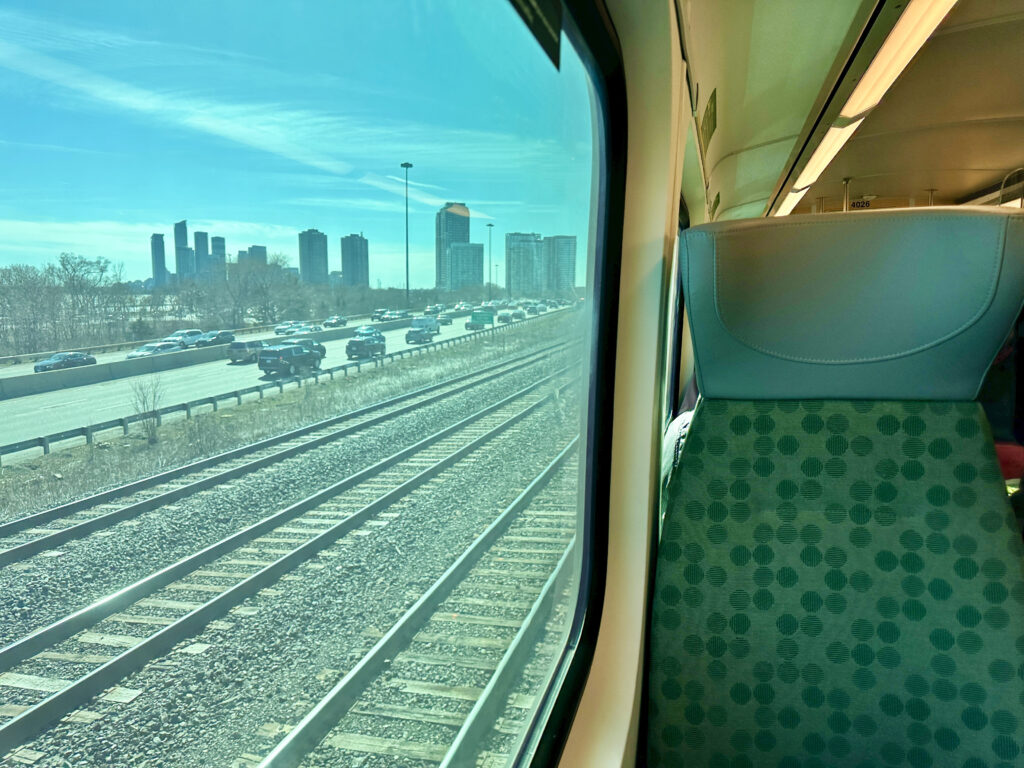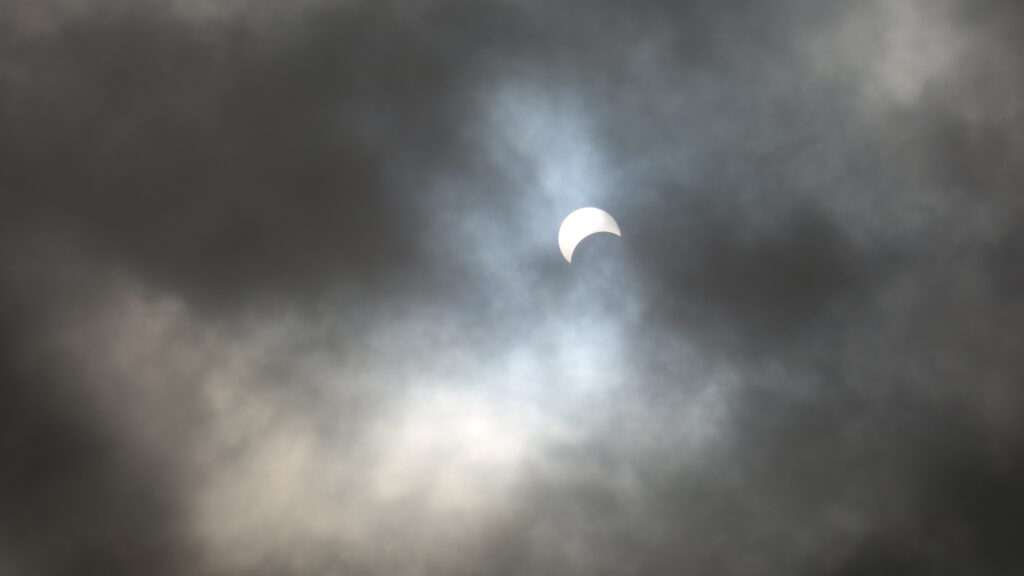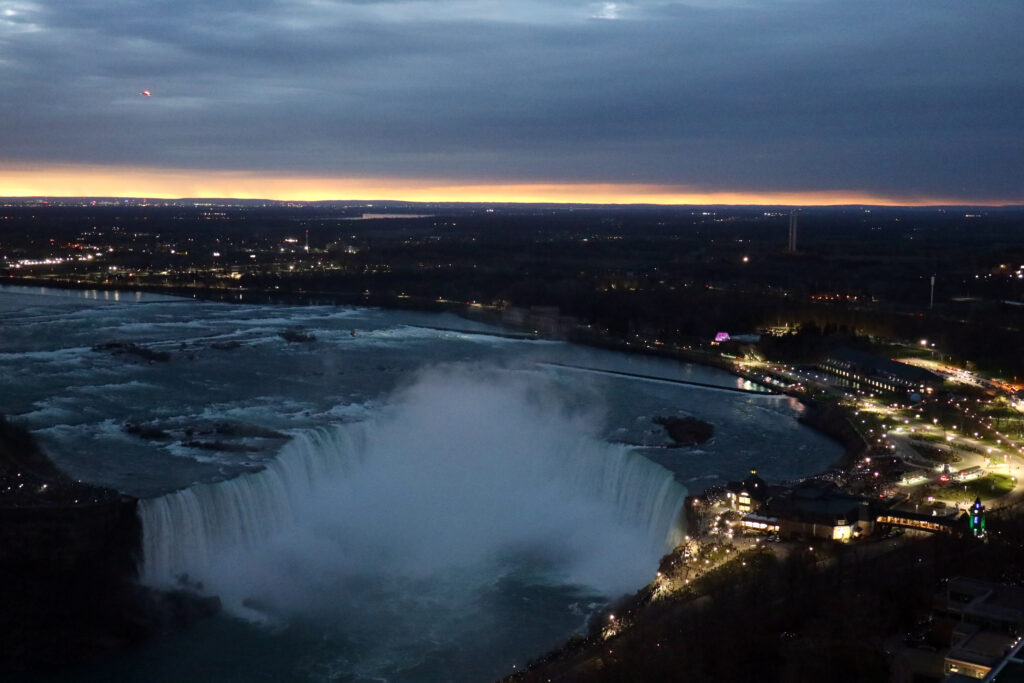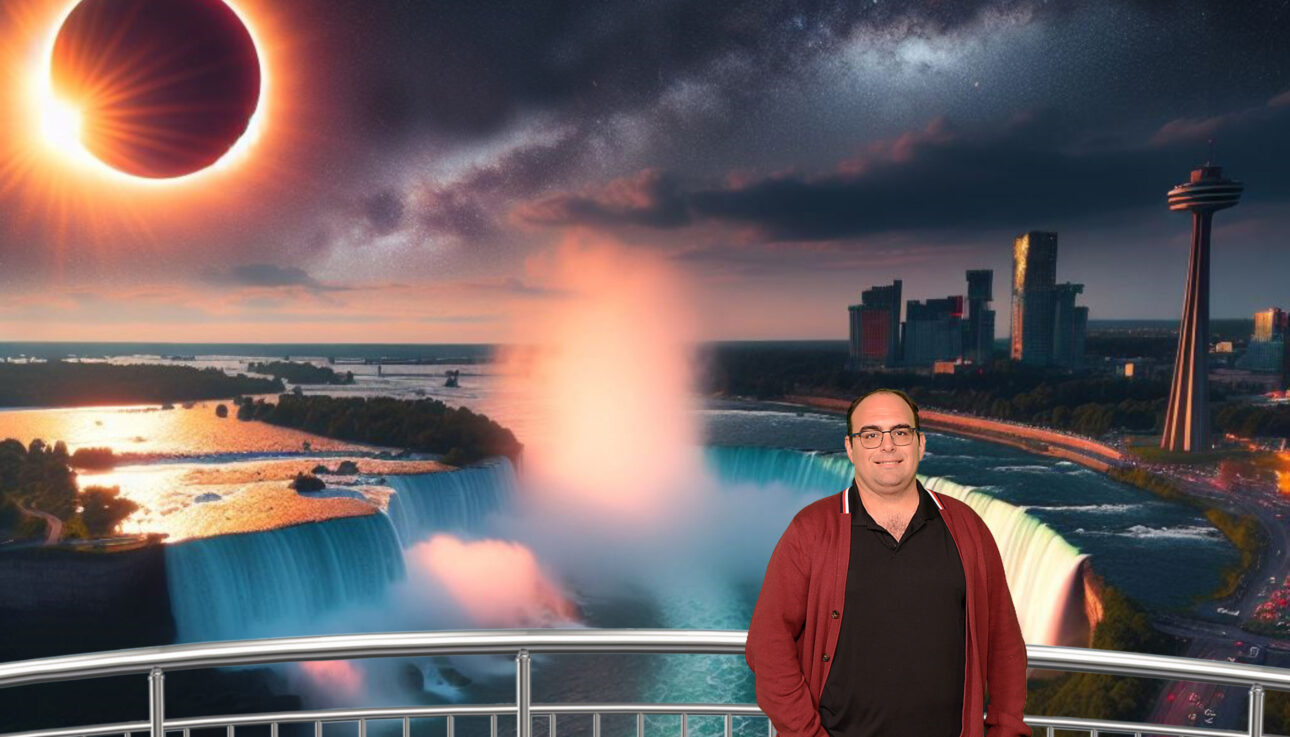The 2024 Solar Eclipse was a worldwide phenomenon which stood as a testament to the timeless allure of celestial phenomena. Niagara Falls was rated by National Geographic as the number one spot to see the eclipse. It is said that over a million people made the trip to Niagara Falls to view the eclipse, and 98% of the city’s hotel rooms were sold out. Here’s how the experience was:
Getting There

From 2 weeks prior to the event, it was announced that the roads would be insanely crowded. My top ways of combating such crowds are to arrive early, and avoid driving in such cases. GO Transit was offering additional service to Niagara Falls on the day of the eclipse. I thought I would park my car at the train station in Oakville, and take advantage of the extra service. The earliest transportation there was to take two buses, departing from Oakville at 06:10. I arrived in Niagara Falls at 08:15. While there were more cars on the road than usual at that time, the traffic was smooth as usual with no delays. Coming back, there was a train departing Niagara Falls at 19:20, which meant hakuna matata to any traffic departing Niagara Falls after the eclipse.
Location, Location, Location
From months prior to the eclipse, I could only imagine the crowds that would conquer the city. I am the type of traveller who books in advance to ensure great experiences while there is still availability. Rather than standing in front of the falls like the majority of travellers, I had booked a ticket to the Skylon Tower. For that day, the tower sold a limited number of tickets at $40, which was almost double the regular price. I happened to have booked the ticket while there was still availability. Within less than a week after I booked, all tickets had been sold out. The entry time for those tickets was around 14:00.
Upon arrival, I was told that the earliest I could arrive at the tower for guests with tickets to see the eclipse was at 13:00. I arrived at the tower at 12:30 to get in line, however, I was told that I could not go up until 14:00. Guests arriving were being told that they only had until 13:30, or they could come back after 16:00. I simply waited for an hour, and the first person arrived for the eclipse around 13:40.
Viewing the Eclipse

This was a one-of-a-kind experience. The process began at precisely 14:04, when the moon started its gradual journey across the sun. Despite the overcast skies, which obscured the shadows and light typically associated with such an event, there were moments when the moon briefly emerged from the clouds, clearly visible as it covered the sun. During these intervals, the sun appeared as a crescent, reminiscent of a half or quarter moon.

This slow progression continued until around 15:10, when the sky began to seem to be darkening, similar to the onset of dusk on a cloudy evening. At 15:20, darkness descended abruptly, enveloping the landscape into night in just 10 seconds. This period of totality, when the moon completely covered the sun, lasted for three minutes, casting an eerie twilight over the area. After three minutes, the light returned as swiftly as it had disappeared, again taking only about 10 seconds. Despite remaining on site for an additional 25 minutes in hopes of further glimpses, the persistent cloud cover thwarted further observation. By 15:50, the eclipse had concluded.
On a cloudy day in 2024, the world witnessed a rare total solar eclipse, an experience that will not occur again until 2144. This extraordinary event left an indelible mark on those fortunate enough to witness it, a reminder of the rare and awe-inspiring occurrences that nature can provide. The fleeting moments of totality, where day turned to night in a matter of seconds, were a humbling spectacle, evoking a sense of wonder and reflection on our place in the cosmos. Such events inspire scientific curiosity and a deeper appreciation for the natural world, encouraging both amateur and professional astronomers to explore further.

